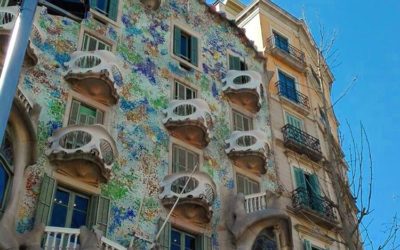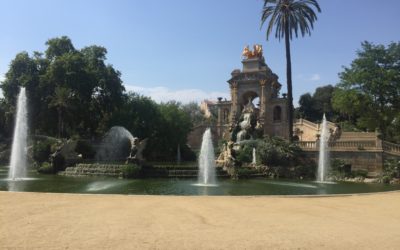Barcelona serves as the ultimate cool destination harnessing together seven attributes that make it trendy. An incredible clubbing scene arises from the city’s enormous electronic music presence as well as minimal police oversight and persistent influx of wealthy individuals. Parties at Barcelona typically go from evening until sunrise while residents experience a blend of beach festival excitement with metropolitan nightlife activity.
The Razzmatazz institution stands as Barcelona’s leading nightclub institution among all others. Visitors who choose to spend their night at Razzmatazz must stay exclusively within the nightclub boundaries. No one should find Razzmatazz difficult to enter as the club spans enormous dimensions. Five spaces make up the venue including an enormous indie room on level one. Other rooms higher up the building play techno, electro, and pop music. Students join tourists and residents in choosing Razzmatazz as their destination for an entertaining night out. You certainly won’t be bored.
The Jazz and dance venue that operates as Jamboree sits in Barcelona’s Gothic quarter adjacent to Las Ramblas and delivers entertainment in this historic district. You’ll need extra money to attend Jamboree but its elevated status and entertainment qualifications surpass those of the mere student-friendly spots. The club presents a regularly changing series of reggae, hip hop, funk, neo soul and rock music shows in addition to its jazz performances which happen during different evening times throughout each week.
On Diagonal Avenue, you can find a club with a revolving dance floor: BeCool. This nightclub makes itself the perfect choice for listeners who acknowledge and appreciate deep house music styles. It is known for its top-quality sound system, and so tends to draw in a certain crowd: it is a club for clubbers.
Among the numerous entertainment clubs in Barcelona only La Terrazza exists as the one open-air venue inside a mountain village walled area. La Terrazza continues to welcome international DJs during its twenty-year legacy of hosting them. Located on the Montjuic sunlit hills near Placa Espanya this club lets you experience Barcelona’s excellent nightclubs under pleasant Mediterranean weather conditions.
The Raval area serves as both beginning and final venue for countless city nightlife excursions since it maintains its identity as a charismatic yet dangerous neighborhood within the city’s central boundaries. Scores of young revellers participate weekly in the notorious events of Nasty Mondays and Crappy Tuesdays at Sala Apolo. Apolo sports a vast dance floor, one of the biggest in the city. Although aimed at youthful clients it offers beverage costs that Барселонскими rate reflection as affordable. For something with a little more character, head to one of Barcelona’s oldest venues: Les Enfants. Since 1963 this cool establishment continues to serve as an artistically decorated cocktail bar and nightclub which maintains its position as an essential part of Barcelona nightlife.
The beachfront clubs throughout the Port Olympic area represent the city’s most refined spot for cocktail enjoyment. Visiting this area for a cheap night out proves impossible but guests looking for action can find excitement because numerous massive clubs cluster along the beachfront. At daytime Opium functions as a calm beachfront bar and restaurant with a sophisticated atmosphere. Before nightfall the space transforms into an active nightclub. Across Europe Opium stands as one of the city’s leading nightlife destinations and has achieved international recognition by bringing in major DJs like Avicii Tiesto and David Guetta. Two noted Port Olympic clubs greet visitors with exquisite elegance through Pacha and the outstanding Shoko lounge. The extended dance parties at Shoko continue endlessly throughout the night which frequently prompts the club to serve as the hosting venue for post-event celebrations around town.
To experience intimate clubbing check out Moog. The Barcelona electronic scene relies centrally on this compact techno venue. The nightlife hotspot Las Ramblas teaches guests how to heat up their evenings at Moog since this dance place sits where La Rambla ends and provides users with many vibrant cocktail spots to finish their night. Each destination worth visiting should offer an opportunity for reservation through their online guest list. Clubs in any remote corner of town become very crowded during summertime.




